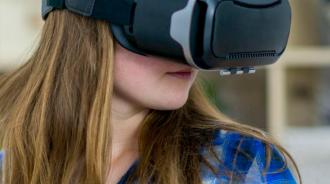 Photo Courtesy of EdTech
Photo Courtesy of EdTech
"As the price of virtual and augmented reality headsets continues to fall, the number of educational users will jump significantly, up to an estimated 15 million by 2025, according to a report from Goldman Sachs. VR applications, in particular, are expected to grow quickly in higher education. By 2021, 60 percent of U.S. higher education institutions will be using the technology to create simulations and immersive learning environments, according to Gartner.
Several institutions are already embracing these transformative tools. Here are four ways colleges can benefit from utilizing virtual reality:
1. Provide Visual and Immersive Learning Opportunities
Classroom applications of immersive reality vary widely. Institutions are using VR to augment programs in criminal science, healthcare, agriculture and fine arts, among others. In California, a virtual dissection table housed in the J and K Virtual Reality Learning Center at the Western University of Health Sciences lets students learn about anatomical functions by moving layers of virtual tissue to view more than 300 anatomical visualizations, created using scans of real patients and cadavers.
To help students grasp concepts in Earth science, an Eastern Michigan University professor built an AR sandbox using a Microsoft Xbox Kinect camera, digital data projector, computer, and simulation and visualization software. Students can create mountains, volcanoes, river channels, glacial deposits or virtual rain by manipulating a digital map projected on a box of sand.
2. Train Future Instructors to Take Advantage of VR Teaching Tools
Lehigh University is training future educators to use emerging technologies in their classrooms. At the university’s Center for Innovation in Teaching and Learning, Professor Scott Garrigan has been teaching students and faculty to use two HTC VIVE VR systems. In addition to gaining hands-on experience, Garrigan says the experience helps students think about ways to use tech tools to help learners absorb content."
Read more virtual reality at EdTech
